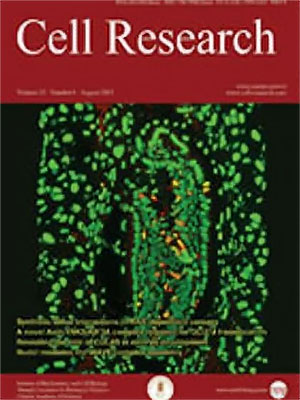Volume 8 Issue 3, September 1998: 219-230
ORIGINAL ARTICLES
A possible hydrolysis mechanism of beta-naphthyl acetate catalyzed by antibodies.
Yuan YR, Xia ZX, Yang CH, Yang BH, Yeh M.
Shanghai Institute of Cell Biology, Chinese Academy of Sciences, China.
Correspondence: Yeh M.(imceng@server.shcnc.ac.cn )
The mechanism of ester hydrolysis has been extensively studied; however, the precise function of active-site residues in promoting catalysis is unclear. We describe here the structural models for the complex of a catalytic antibody Fv fragment with a phosphonate transition-state analogue, constructed by using gene cloning, sequencing and molecular modeling, mainly based on a known X-ray structure of a catalytic antibody. Hydrophobic and electrostatic analyses of the Fv/analog and Fv/substrate interaction suggest the hydrolysis mechanism: Tyr L91 and Tyr H97 play important roles to stabilize the beta-naphthyl group of hapten through pi-stack; His H35 donates a pair of free electrons at the atom NE2 to an active water and let it to be a partial hydroxide, which attacks the carbon atom of the carbonyl group of the substrate. Both His H35 and Arg L96 can form hydrogen bonds and stabilize the anionic tetrahedral intermediate formed during turnover. This mechanism emphasizes that an active water bridge may be formed during hydrolysis process.
FULL TEXT | PDF
Browse 2564


